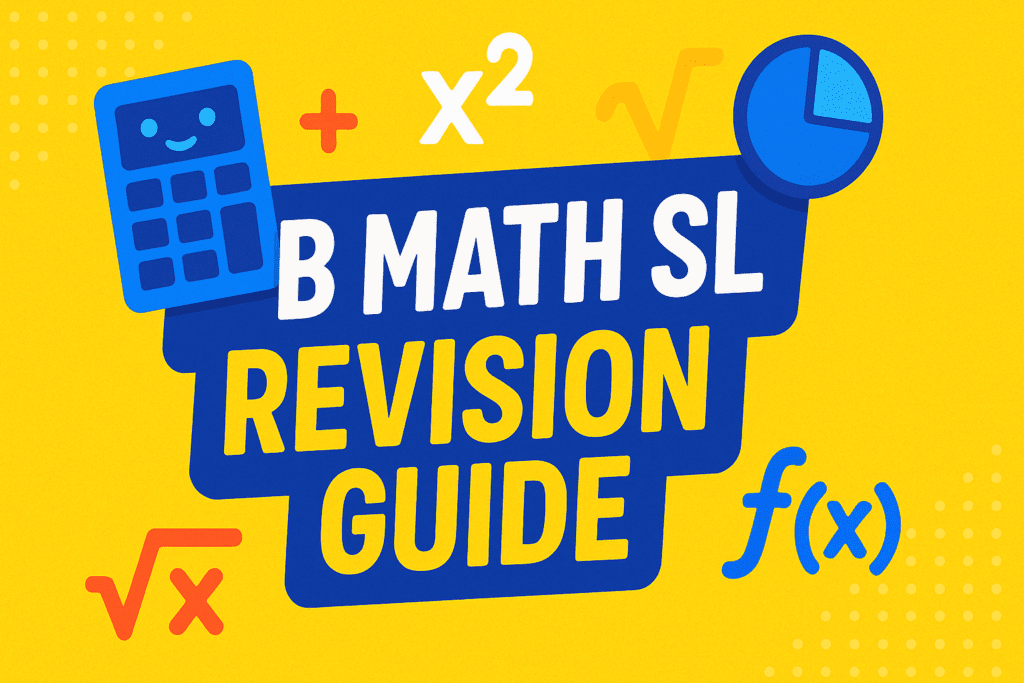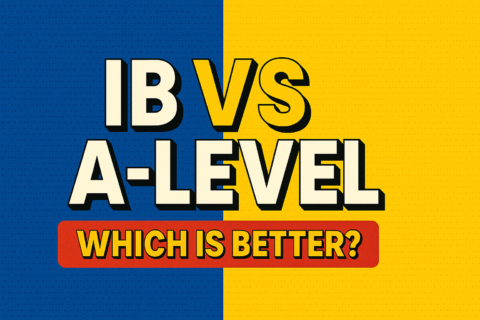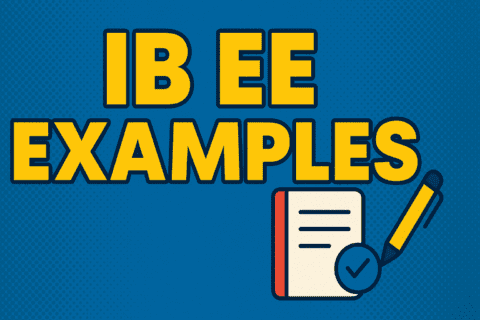IB Math SL Revision Guide: The Complete Success Toolkit for Students
Conquering the IB Math SL (Standard Level) exam doesn’t require genius-level math skills—it requires strategy, clarity, and consistency. Whether you’re a student preparing for exam day or a parent or educator guiding the journey, this IB Math SL revision guide brings structure, motivation, and expert-backed resources to the table.
Let’s decode the syllabus, understand exam techniques, and build a study system that helps students score higher with less stress.
What Is IB Math SL?
IB Math SL was previously a standalone course in the older curriculum structure. As of 2019, the IB replaced it with two new pathways:
Mathematics: Analysis and Approaches SL (AA SL)
Mathematics: Applications and Interpretation SL (AI SL)
For the purposes of this guide, we’ll focus primarily on AA SL, which is most similar to the old Math SL in terms of core topics and conceptual rigor.
Core Topics Include:
Algebra
Functions
Geometry and Trigonometry
Statistics and Probability
Calculus
Why IB Math SL Matters
While less abstract than HL, Math SL still demands a strong foundation in logic, algebraic fluency, and real-world application. It’s a balanced course ideal for:
Students pursuing social sciences, biology, or business
Non-STEM university applicants
Students looking to build core math confidence
Universities worldwide recognize IB Math SL as evidence of strong quantitative skills and academic discipline.
IB Math SL Revision Timeline: Plan to Win
1. Start Early with a Syllabus Map
Download the latest syllabus from ibo.org
Create a color-coded tracker: Red (unclear), Yellow (needs review), Green (mastered)
2. Study in Cycles
Cycle 1: Understand concepts
Cycle 2: Practice topic-specific problems
Cycle 3: Take mock papers under timed conditions
3. Integrate Your Calculator
The exam allows the use of an IB-approved graphic display calculator (GDC).
Master solving equations, graphing, and statistical functions
Know how to reset and troubleshoot it
Breakdown: Topic-by-Topic Revision Tips
Algebra
Practice solving linear and quadratic equations, completing the square, and manipulating expressions
Master exponential and logarithmic rules
Functions
Identify key features: domain, range, asymptotes
Transformations: vertical/horizontal shifts, reflections
Geometry & Trigonometry
Use radian measure and solve triangle problems with sine and cosine rules
Know key formulas by heart (area of triangle, circle, arc length)
Statistics & Probability
Interpret statistical displays (histograms, box plots)
Understand measures of central tendency and dispersion
Calculate and interpret probabilities using Venn diagrams, tree diagrams, and binomial/norm distributions
Calculus
Learn differentiation basics: rules, gradients, tangents
Understand integration as area under the curve
Apply to kinematics problems (velocity, displacement)
Internal Assessment (IA) Advice
The Math SL IA counts for 20% of your final score. It should demonstrate:
Clear mathematical communication
Accurate reasoning and appropriate diagrams
Use of technology (graphing tools, spreadsheets)
Strong IA Topics Examples:
Optimizing profit in a small business using linear programming
Analyzing environmental data (CO2 emissions, deforestation trends)
Modeling population growth using exponential functions
Tip: Pick a topic you genuinely enjoy. The IA is more fun (and easier to score well in) when you’re curious.
Past Paper Practice: The Real Game Changer
Use past papers to:
Get familiar with Paper 1 (no calculator) and Paper 2 (calculator allowed)
Practice applying IB command terms: “calculate,” “explain,” “justify”
Simulate timed exam conditions every weekend during your final 6 weeks
Where to Find Quality Past Papers:
HeLovesMath.com (topic-wise + full papers)
Revision Village
IB Documents
IBO past paper booklets (official site)
Tools That Make Revision Easier
HeLovesMath.com Resources:
Topic summaries
Quizzes and worksheets
IA sample projects
Past paper walkthroughs
Study Apps:
Wolfram Alpha (for concept checking)
GeoGebra (visual math)
Anki (flashcard decks for formulas)
Real Student Strategies
“Making a revision wall in my room helped a lot. I stuck formulas, graphs, and mistakes I made so I wouldn’t repeat them.” — Fatima, IB SL Graduate
“I found watching solution videos after each paper I did made the difference. It’s like a free tutor session.” — Oscar, IB Math SL Student
Quick Revision Checklist
✅ Know your syllabus
✅ Organize by topic and difficulty
✅ Use past papers religiously
✅ Track your accuracy and speed
✅ Don’t neglect IA formatting and reflection
✅ Prepare your calculator and backup batteries
FAQs (Based on People Also Ask)
How can I best revise for IB Math SL?
Start with topic mastery using the syllabus, then use past paper questions and GDC practice. Combine visual notes with mock tests for the best results.
Is IB Math SL difficult?
It’s moderate in difficulty. With consistent effort, good resources, and past paper practice, students can achieve high scores.
What IA topics are good for Math SL?
Real-life applications of algebra, probability, or statistics are ideal. Projects involving business, sports, or environmental data are popular and effective.
How much is the IA worth in Math SL?
The IA accounts for 20% of the final Math SL grade.
Which calculator is best for IB Math SL?
Any IB-approved graphic display calculator (TI-84 Plus, Casio fx-CG50) works well. Ensure it’s in good working order before exams.
Final Words: With smart planning and the right resources, IB Math SL is absolutely manageable. Let HeLovesMath.com be your daily revision partner and your trusted support system.
Good luck and happy revising! 📘





